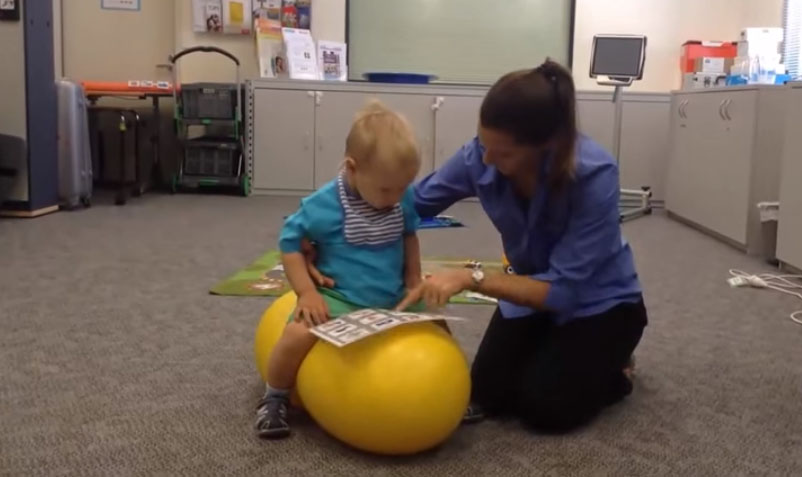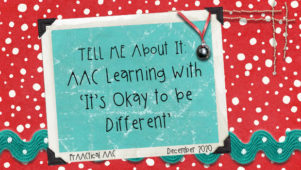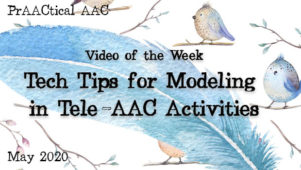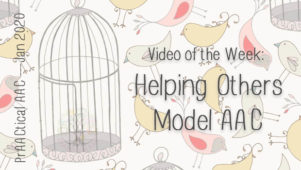Video of the Week: Aided Language Input During Play
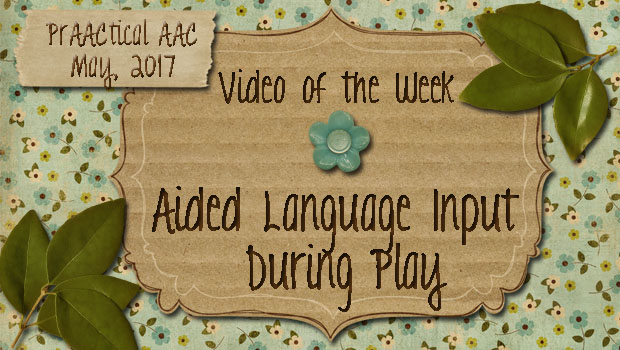
Typically developing children acquire language not through direct instruction but by immersion in an environment where the language of the community is modeled all day long. When they eat and when they play, in care routines at home and in exchanges in the community, children are continually hearing the language they are learning to produce.
When parents of Deaf or hard of hearing babies learn of their children’s disability, many clamor to learn sign language and use it as they bathe, feed, and play with their children. These parents may not be perfect sign language models, but they understand that their efforts to learn and use sign language will play a critical role in helping their children learn to communicate effectively. Thus, they strive to sign all day long as they talk to their kids.
The pervasive, contextually-driven exposure to language is the foundation on which children build skills in interaction, vocabulary, and grammar.
Children learning to communicate through AAC need that same foundation. It is important for them to hear the language of their community (e.g., spoken English, Spanish, Hebrew), of course. But it is also critical that they have high levels of exposure to the way that language is expressed through AAC. For these children, spoken language and language expressed through AAC serve as the dual pillars on which a foundation of verbal expression can be built.
It makes sense, right? In order to become linguistically proficient users of AAC, children need a multitude of experiences in which others are using AAC. Seeing and hearing others use AAC delivers some significant messages.
- When WE use AAC, children see it as important. As valuable. As effective. As normal.
- When WE use AAC, children learn word meanings, but they also begin to connect the AAC symbols to the words they hear and the context in which those words are used.
- When WE use AAC, children get insight into the rules for combining words expressed through AAC symbols into phrases, sentences, and questions.
- When WE use AAC, children learn that it can be used to ask, to tell, to wonder, to argue, to notice, to explain, and to complain.
- When WE use AAC, children see that language expressed in this way gives us some control over our environment, helps us cope with challenges, and allows us to better understand our world.
- When WE use AAC, children see that AAC is a valid and valued way to connect.
It makes sense for US to use AAC, but where do we go from there? How do we move from understanding its importance to actually living lives that are permeated with AAC? In many situations, making AAC a part of our ongoing interactions throughout the day takes near Herculean effort. We have to learn it ourselves, which is tough enough for busy, stressed families and professionals. Then we have to stretch ourselves to put AAC into action as we live and narrate our lives. We strive to be consistent, but we have good days and bad days. For most, it is a work in progress.
Today, we return to The Independent Living Centre Western Australia (ILC) for a video that helps us step forward in this journey. Produced by SLP Yvette Theodorsen and made in collaboration with Noah’s Ark of Western Australia, this video reviews some of the basic principles, demonstrates the strategy, and provides helpful suggestions for embedding AAC use into play.
Enjoy!
Many thanks to the ILC WA, Noah’s Ark WA, and Yvette for making this available.
Direct Link to Video: https://www.youtube.com/watch?v=FY2uHroQFTo&t=471s
Filed under: Video of the Week
Tagged With: aided language input, language development, modeling, play
This post was written by Carole Zangari
